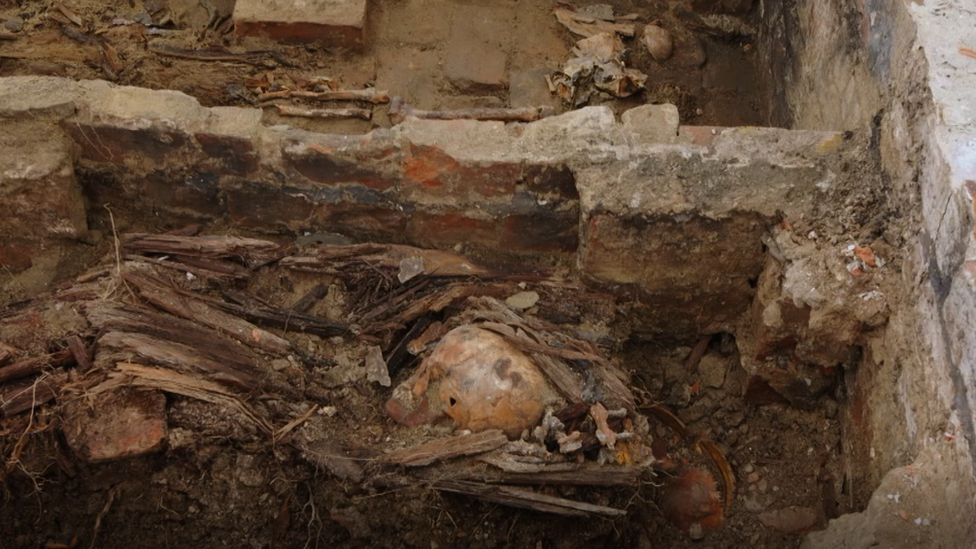Leeds City Museum banks ancient tiny coin treasure
- Published
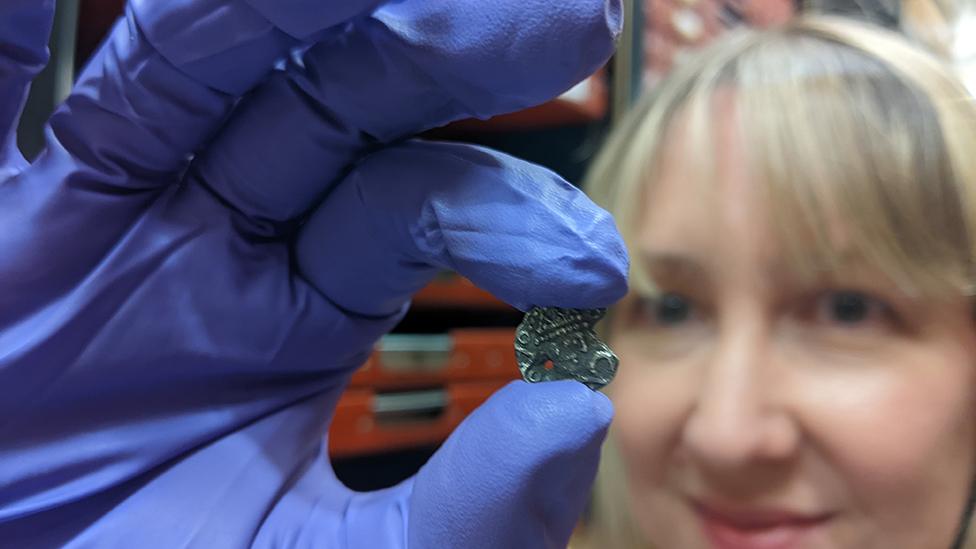
The "sceat" was unearthed by a detectorist near Wetherby
A tiny coin which lay buried beneath the Yorkshire soil for more than 1,300 years has been "banked" by a museum.
The miniature metal object, unearthed by a detectorist near Wetherby, is an example of a sceat, one of the smallest coins ever made in Britain.
It measures just 12mm in diameter and features a crowned head and a beaded pattern on the reverse.
After formally being declared treasure, it has been secured for the collection at Leeds City Museum.
Small change
Kat Baxter, the museum's curator of archaeology and numismatics, said the coin, which had been pierced, dated back to around 700 AD, and may have been worn around the neck "as protection, or as a spiritual symbol".
"More than 1,300 years ago, someone decided they wanted to wear it as a piece of jewellery because it meant something specific and personal to them," she said.
"Even after so many centuries buried in the ground, just seeing it today gives us a very real and direct connection to that person and reminds us of the history underneath our feet."
She described the sceat as a "tiny object" which had "a surprisingly big story to tell".
According to the museum, pierced sceattas are uncommon and are more usually found in Kent, suggesting the Leeds example may have been a copy made at the time.
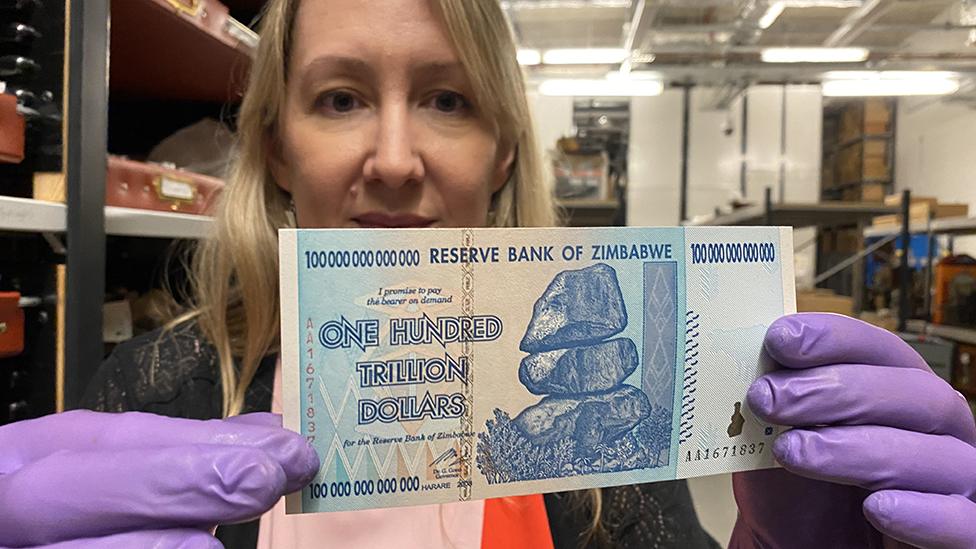
The museum is currently hosting a money-themed exhibition featuring unusual bank notes from around the world, as well as ancient coin hoards
The tiny sceat forms part of an exhibition exploring the evolution of money, which has attracted more than 30,000 people.
Exhibits include ancient coin hoards, unusual examples of money from around the world and popular money-themed toys and games.
Money Talks at Leeds City Museum is free to visit and runs until 26 June.

Follow BBC Yorkshire on Facebook, external, Twitter, external and Instagram, external. Send your story ideas to yorkslincs.news@bbc.co.uk, external.
- Published2 February 2022

- Published18 February 2022
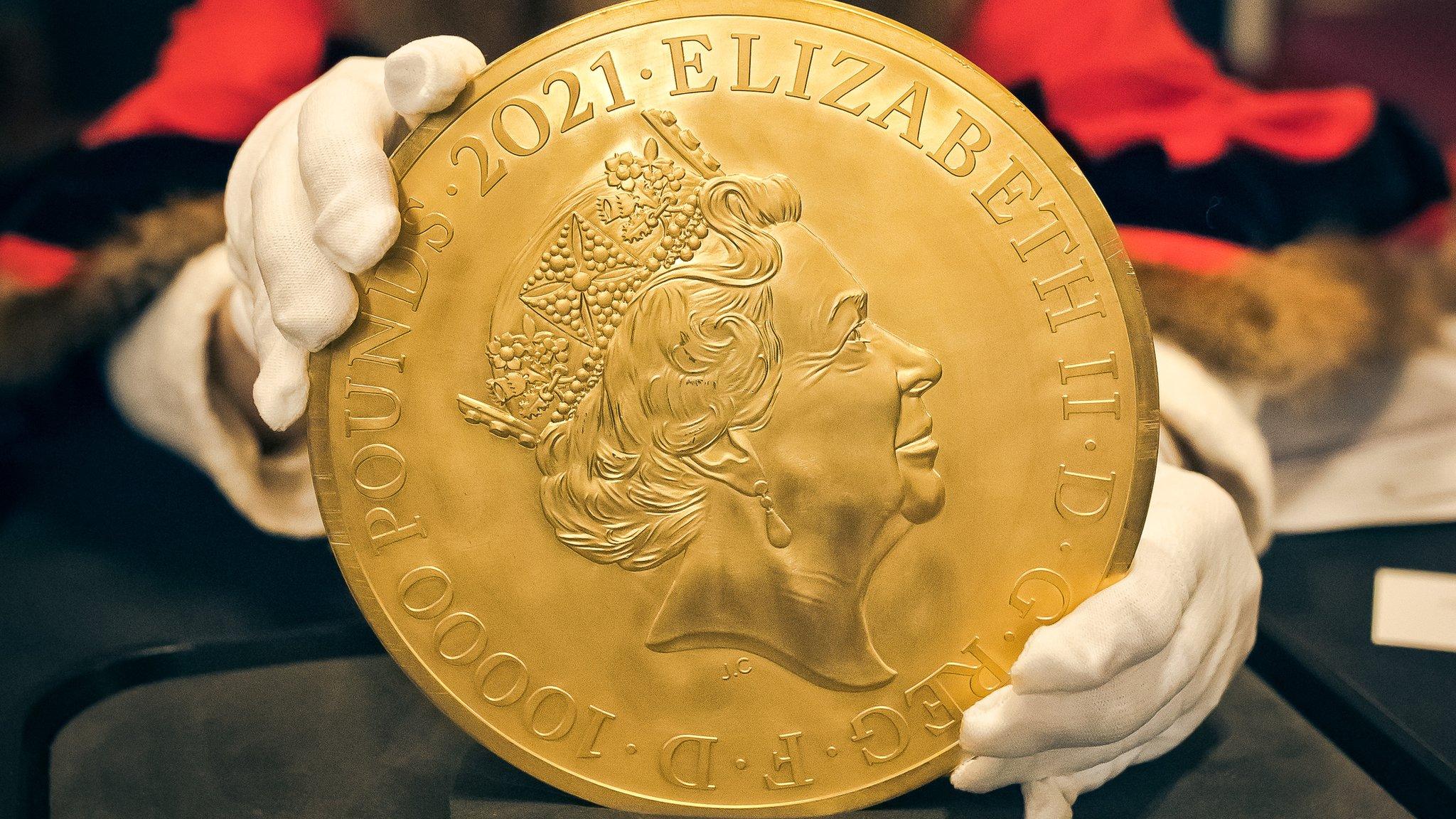
- Published21 May 2022

- Published5 February 2022
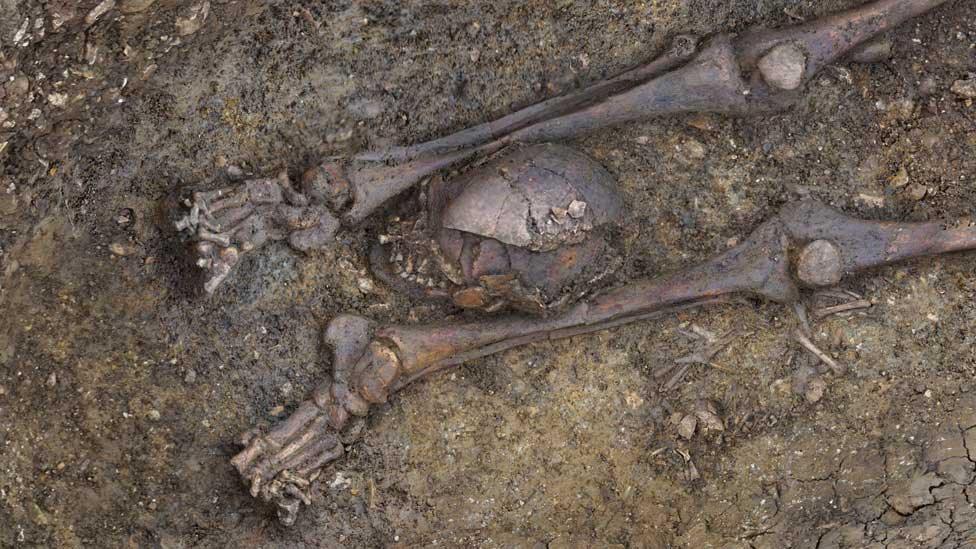
- Published18 January 2022

- Published6 January 2022
